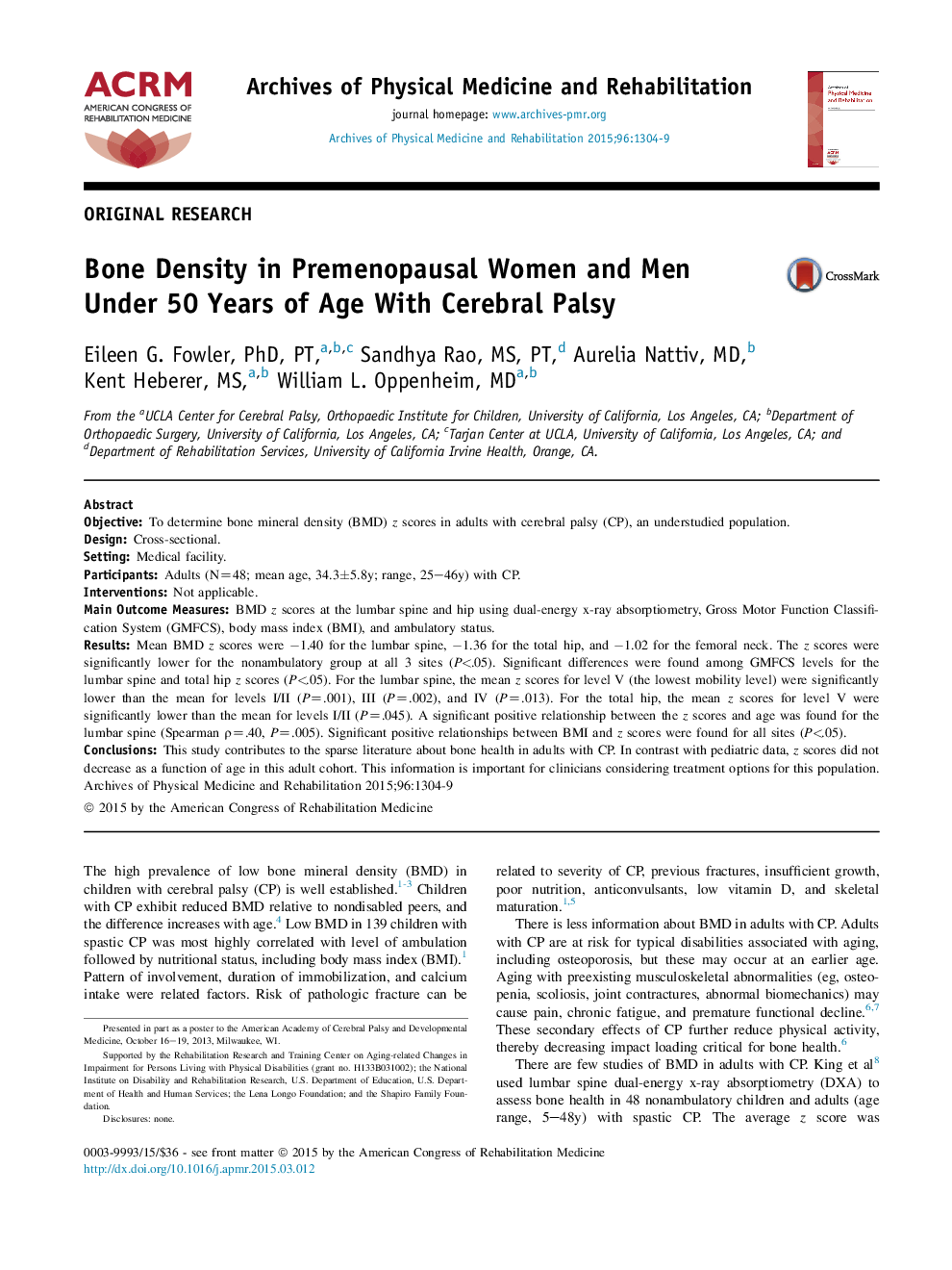| Article ID | Journal | Published Year | Pages | File Type |
|---|---|---|---|---|
| 3448114 | Archives of Physical Medicine and Rehabilitation | 2015 | 6 Pages |
ObjectiveTo determine bone mineral density (BMD) z scores in adults with cerebral palsy (CP), an understudied population.DesignCross-sectional.SettingMedical facility.ParticipantsAdults (N=48; mean age, 34.3±5.8y; range, 25–46y) with CP.InterventionsNot applicable.Main Outcome MeasuresBMD z scores at the lumbar spine and hip using dual-energy x-ray absorptiometry, Gross Motor Function Classification System (GMFCS), body mass index (BMI), and ambulatory status.ResultsMean BMD z scores were −1.40 for the lumbar spine, −1.36 for the total hip, and −1.02 for the femoral neck. The z scores were significantly lower for the nonambulatory group at all 3 sites (P<.05). Significant differences were found among GMFCS levels for the lumbar spine and total hip z scores (P<.05). For the lumbar spine, the mean z scores for level V (the lowest mobility level) were significantly lower than the mean for levels I/II (P=.001), III (P=.002), and IV (P=.013). For the total hip, the mean z scores for level V were significantly lower than the mean for levels I/II (P=.045). A significant positive relationship between the z scores and age was found for the lumbar spine (Spearman ρ=.40, P=.005). Significant positive relationships between BMI and z scores were found for all sites (P<.05).ConclusionsThis study contributes to the sparse literature about bone health in adults with CP. In contrast with pediatric data, z scores did not decrease as a function of age in this adult cohort. This information is important for clinicians considering treatment options for this population.
